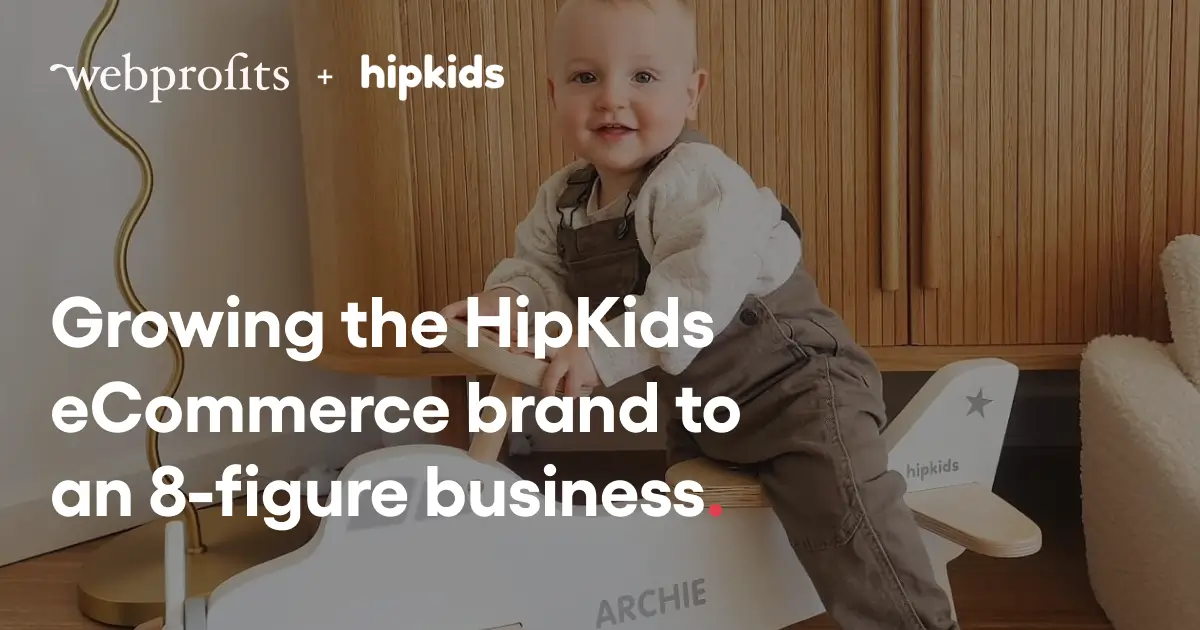A Comprehensive Guide to Answer Engine Optimisation (AEO)

Written by: Jessica Grassick
Published:
18 Jun 2025
Table of Contents
- Introduction: Why AEO Matters Now
- Defining AEO: The Next Evolution of Search
- AEO vs. Traditional SEO: A Strategic Diversification
- Core Pillars for AEO Success
- Essential AEO Tools
- AEO Implementation Roadmap
- Real-World AEO Wins – Coming Soon…
- Pitfalls to Avoid
- Looking Ahead: The Future of AEO
- Conclusion & Next Steps
Diversify Your Search Strategy in 2025
Key Takeaway (TL;DR):
- AEO = Diversification of SEO, it’s not a replacement: augment your core SEO with content engineered for AI-driven channels (chatbots, voice assistants, AI-overviews).
- Visibility Everywhere: measure and optimise your brand’s Share of Voice across each AI platform – using both enterprise tools (Profound, Scrunch) and entry-level audits (SEMrush/Ahrefs, manual chatbot checks).
- Focus on Intent & EEAT: anticipate your audience’s questions, build concise proof blocks tagged with schema and author credentials, and feed clear entity signals to LLMs.
- Iterate Fast: AEO is inherently probabilistic – audit regularly, test new prompts, refine your blocks every 4–6 weeks, and track AI-referral clicks in GA4.
- Act Now: if you’re not already embedding AEO into your search strategy, you’re ceding ground to competitors. Start today to secure your brand as the go-to answer in 2025 and beyond.
1. Introduction: Why AEO Matters Now
Search as we know it is breaking apart – and for the better. The dominance of traditional keyword-based SEO is giving way to something far more powerful, complex, and opaque: Answer Engine Optimisation (AEO).
At Webprofits, we’re not simply reacting to this disruption – we’re reengineering our entire SEO philosophy to align with how large language models (LLMs) now process and serve information. This shift isn’t just technical. It’s philosophical. It redefines what it means to be visible in a machine-led discovery landscape.
If traditional SEO is about proving your relevance to an algorithm, AEO is about proving your authority to a machine building its own worldview.
The Problem With Traditional Thinking
What most brands haven’t yet realised is this: LLMs don’t access the live web. Tools like ChatGPT, Gemini, Copilot, and Perplexity extract answers from static databases and curated datasets – not from your perfectly optimised blog post published last Tuesday.
That means Google rankings no longer guarantee AI visibility. In fact, you could rank #1 on Google – and be completely invisible in AI-generated responses. That’s a seismic shift. And it’s already happening.
We need to pivot from chasing broad keyword coverage to delivering sharp, structured, problem-solving guidance. From market share to problem share.
The New Metric: Share of Voice in AI
Winning in this new space means measuring visibility differently – through Share of Voice across AI-powered prompts and responses. It’s not just about the SERP anymore. It’s about showing up where decisions are made: in chatbots, voice assistants, and AI Overviews.
That means embedding clear, machine-readable answers that language models can trust and cite. When someone asks, your brand becomes the source.
What Comes Next
If AEO isn’t part of your strategy yet, now is the moment to act. This is your opportunity to lead—not lag. Embrace the shift. Experiment boldly. Engineer visibility at the source.
Because in 2025, being everywhere isn’t a luxury – it’s a requirement.
2. Defining AEO: The Next Evolution of Search
Answer Engine Optimisation (AEO) is the practice of structuring content so that large language models (LLMs) and AI-driven platforms confidently extract your answers. Unlike traditional SEO -where you chase rankings, AEO targets direct inclusion in:
- AI-overviews (e.g., Google Gemini snippets)
- Chatbots (ChatGPT, Perplexity, CoPilot, Claude, the list goes on)
- Voice assistants (Siri, Alexa, Google Assistant)
Note on algorithmic vs. AI-driven discovery: Traditional search engines use deterministic, algorithmic rankings—once a search engine settles on a format for a search result, it will generally remain fairly stable (like a train running on a fixed schedule). AI platforms, however, are probabilistic: answers vary by model version, prompt phrasing, user context and session (more like a weather forecast where each run can yield slightly different predictions). That makes manual audits and iterative testing essential.
AEO doesn’t replace SEO – it augments it. Keyword research remains foundational. Use it to guide topic selection and benchmark demand. But more than ever, understanding your audience’s intent is critical: anticipate the questions your customers are already asking, and pre‑empt those conversations with targeted, intent‑driven content. Consider it a diversification: you’re still ptimising for keywords and implementing technical SEO fixes, but you’re also crafting content entities, proof blocks and prompts so AI engines surface your brand as the authority.
3. AEO vs. Traditional SEO: A Strategic Diversification
Think of your overall search strategy as a balanced portfolio.
Traditional SEO is your blue-chip investment – solid, proven and essential.
AEO is growth stock – new, fast-moving and full of upside risk.
Here’s how they differ:
| Aspect | Traditional SEO | AEO |
|---|---|---|
| Primary goal | High SERP rankings | Direct inclusion in AI answers |
| Key metrics | Keyword rank, organic clicks | AI-referral sessions, visibility scores, share-of-voice |
| Content focus | Pillar pages, keyword-optimised posts | Concise Q&As, entity-rich proof blocks |
| Optimisation layers | On-page, off-page, technical | Entities, semantic clusters, prompts, schema signals |
| Success horizon | Medium to long term | Rapid experiments, iterative improvement |
Beyond rankings, Share of Voice in AI engines is now a primary success metric.
You need high confidence in where your brand appears across each AI platform and for which prompts – so you can target and optimise your investments with precision.
Bottom line: AEO is not a replacement but a necessary diversification. Balance both to maximise reach across every touchpoint where users seek answers.
4. Core Pillars for AEO Success. Core Pillars for AEO Success
Here’s the working belief system we’ve adopted at Webprofits. Embed these pillars into every AEO initiative:
4.1 Entities & Knowledge Graphs
- Why it matters: LLMs ingest structured data – label your people, products, locations and concepts.
- Actionable step: Implement schema markup for
Organisation,Product,FAQPage, and custom entity types relevant to your sector, which frankly should have been your SEO standard.
4.2 Semantic Relevance
- Why it matters: AI models prioritise context and related concepts more than exact match keywords.
- Actionable step: Group your target prompts into semantic clusters (e.g., “home loan application,” “mortgage approval process,” “first-time buyer tips”).
4.3 Brand Citations & Trust Signals
- Why it matters: Citations on reputable sites feed credibility signals into LLMs.
- Actionable step: Secure mentions in industry publications, directories and social proof platforms. Maintain consistent NAP data across citation sites.
- Platform nuances: Every AI engine has its own trust algorithm – ChatGPT leans heavily on Wikipedia, Google AI Overviews tap a mix of Reddit and video platforms, and Perplexity favours community-generated content. Early tests show you need different citation strategies per platform to win share of voice.
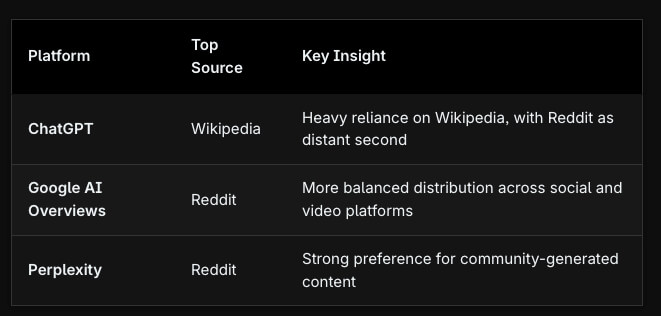
[Source: Profound – AI Source Citation Patterns]
4.4 Proof Blocks & Prompt Engineering
- Why it matters: AI engines favour discrete, self-contained answer snippets – your “proof blocks.”
- Craft prompts that LLMs might use:
- “What are the benefits of electric vehicles?”
- “What’s the difference between a fixed and variable rate home loan?”
- What do you need to qualify for a home loan in Australia?
- Experiment with Q&A snippets, bullet-point summaries and definition boxes.
4.5 Technical Signal Audits
- Why it matters: Page speed, mobile-friendliness and valid schema directly impact AI consume-ability.
- Actionable step: Regularly audit with Google Search Console Core Web Vitals to ensure your website performance.
5. Essential AEO Tools
The AEO landscape is evolving at breakneck speed. New tools emerge daily – some still in beta – but they’re critical to mastering this space. At Webprofits, we’ve been pioneering experiments with Profound, and we’re even launching content in dual formats (SEO & AEO) to learn what truly constitutes a strong search presence in 2025.
5.1 Profound AI Visibility Platform
- Function: Measures your visibility across GPT, CoPilot, Perplexity and Google AI Overviews. Note: Gemini is not included but will be soon.
- Key outputs: Visibility score by model, top citation pages, sentiment analysis.
- Why we love it: It gives us a clear baseline and shows improvement as we optimise our proof blocks. We now understand how our brand is positioned in the wider search world.
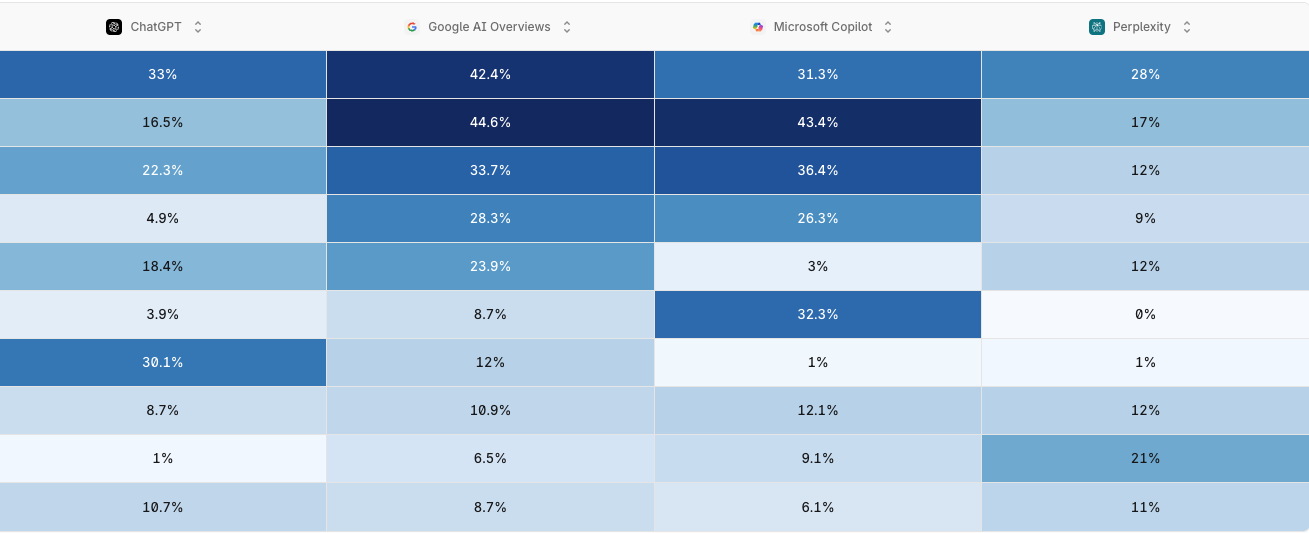
Example Share of Voice Report from Profound
5.2 Scrunch AI Share-of-Voice Dashboard
- Function: Tracks share-of-voice for semantic prompts and categories across AI platforms.
- Key outputs: Weekly SOV trends, emerging query snippets, competitor benchmarking.
- Why we love it: We quickly identify which topics drive the most AI referrals and adapt our content calendar accordingly.
5.3 GA4 AI-Referral Tracking
- Setup: In GA4, build an Explore report that filters sessions where the page referrer matches this regex:
^https:\\/\\/(www\\.meta\\.ai|www\\.perplexity\\.ai|chat\\.openai\\.com|claude\\.ai|chat\\.mistral\\.ai|gemini\\.google\\.com|bard\\.google\\.com|chatgpt\\.com|copilot\\.microsoft\\.com)(\\/.*)?$ - Function: Captures sessions where a user clicks a link out of an AI platform – giving you visibility into which engines and prompts drive real visits.
- Limitations: This only tracks the fraction of users who actually click through. Since AI platforms aim to keep users within their own interface, true AI-driven engagement may be underreported.
- Why we love it: By tracking AI-referral traffic across our clients, we get an early glimpse of which AI channels and content resonate enough to drive clicks. It’s not the full picture, but it’s invaluable insight until more robust AEO analytics tools emerge.
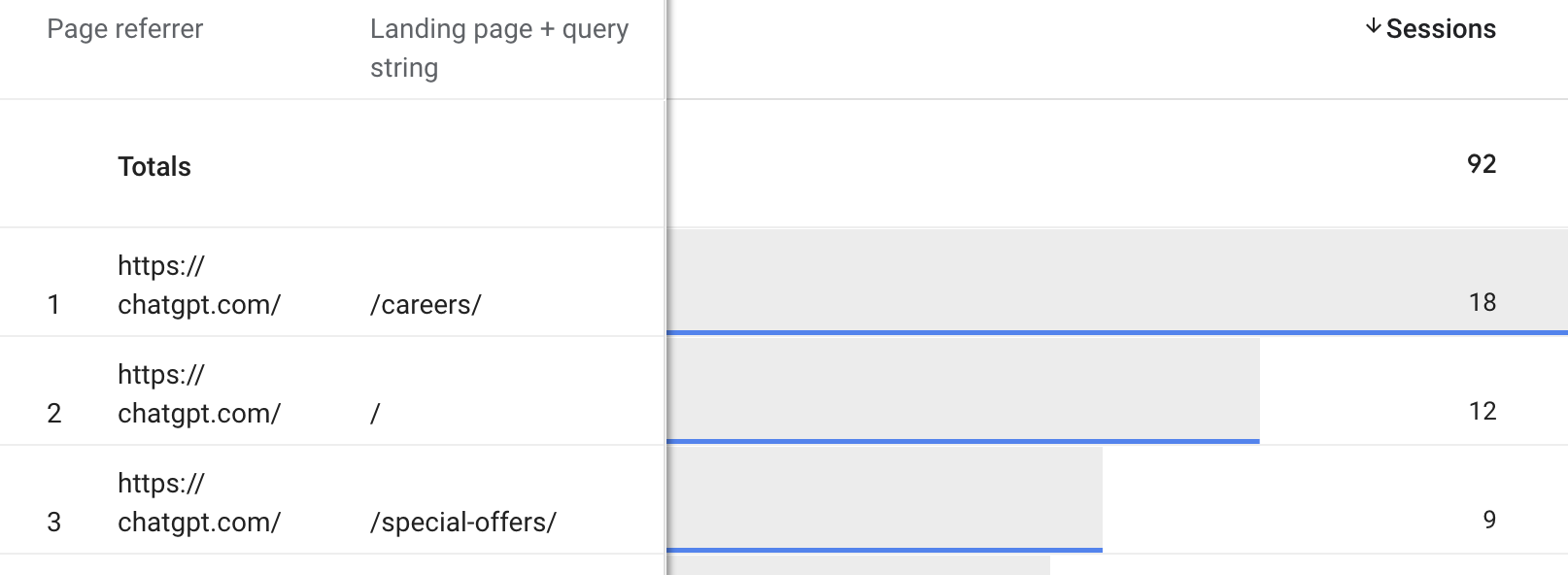
5.4 Schema & Structured Data Generators
- Tools: JSON‑LD generators, Google’s Rich Results Test.
- Function: Simplifies markup for FAQs, HowTo, Product, etc.
- Why we love it: Ensures valid, crawlable schema – foundation for any AEO effort.
6. AEO Implementation Roadmap
Follow this five-step roadmap to bring AEO into your existing search strategy:
6.1 Audit & Baseline Measurement
- Advanced tooling (optional): Deploy Profound & Scrunch scripts on your site to record baseline visibility scores across key LLMs and capture a week of AI-referral sessions in GA4.
- Entry‑level audit: Use platforms like SEMrush or Ahrefs to manually check for “AI-overview” snippets in Google SERPs – search your core prompts and note any featured answer boxes or AI result badges. Track these in a simple spreadsheet by date, prompt and source URL.
- Manual platform checks: Periodically query leading chatbots (ChatGPT, Gemini, Perplexity) for your target prompts and document whether your content appears in the response.
- Think Probabilistically: Unlike traditional search, AEO is inherently probabilistic – results can vary by session, user context or model updates. Manual checks and entry‑level audits provide snapshots, not guarantees, so treat each audit as a trend indicator rather than a fixed outcome.
These combined techniques give you both a high‑level data baseline and a hands‑on view of where you’re showing up without needing enterprise AEO tools.
6.2 Prompt Definition & Keyword Clusters Prompt Definition & Keyword Clusters
- Brainstorm top 15 customer questions.
- Validate with Scrunch semantic snippet reports.
- Prioritise by intent, volume and business impact.
Building & Marking Proof Blocks
- Author concise answers (100–150 words) for each prompt.
- Tag using
FAQPageorQuestion/Answerschema. - Incorporate bullet lists and data callouts for clarity.
6.4 Deploying Schema & Entities
- Add entity markup using schema (
Organisation,Product, custom types). - Validate with Google’s Rich Results Test and Schema Validator.
- Submit updated sitemap to Search Console.
6.5 Testing, Measurement & Iteration
- Re-run Profound visibility reports after 4–6 weeks.
- Analyse changes in AI referrals in GA4.
- Refine underperforming proof blocks; repeat cycles every month.
7. Real-World AEO Wins – Coming Soon 👀
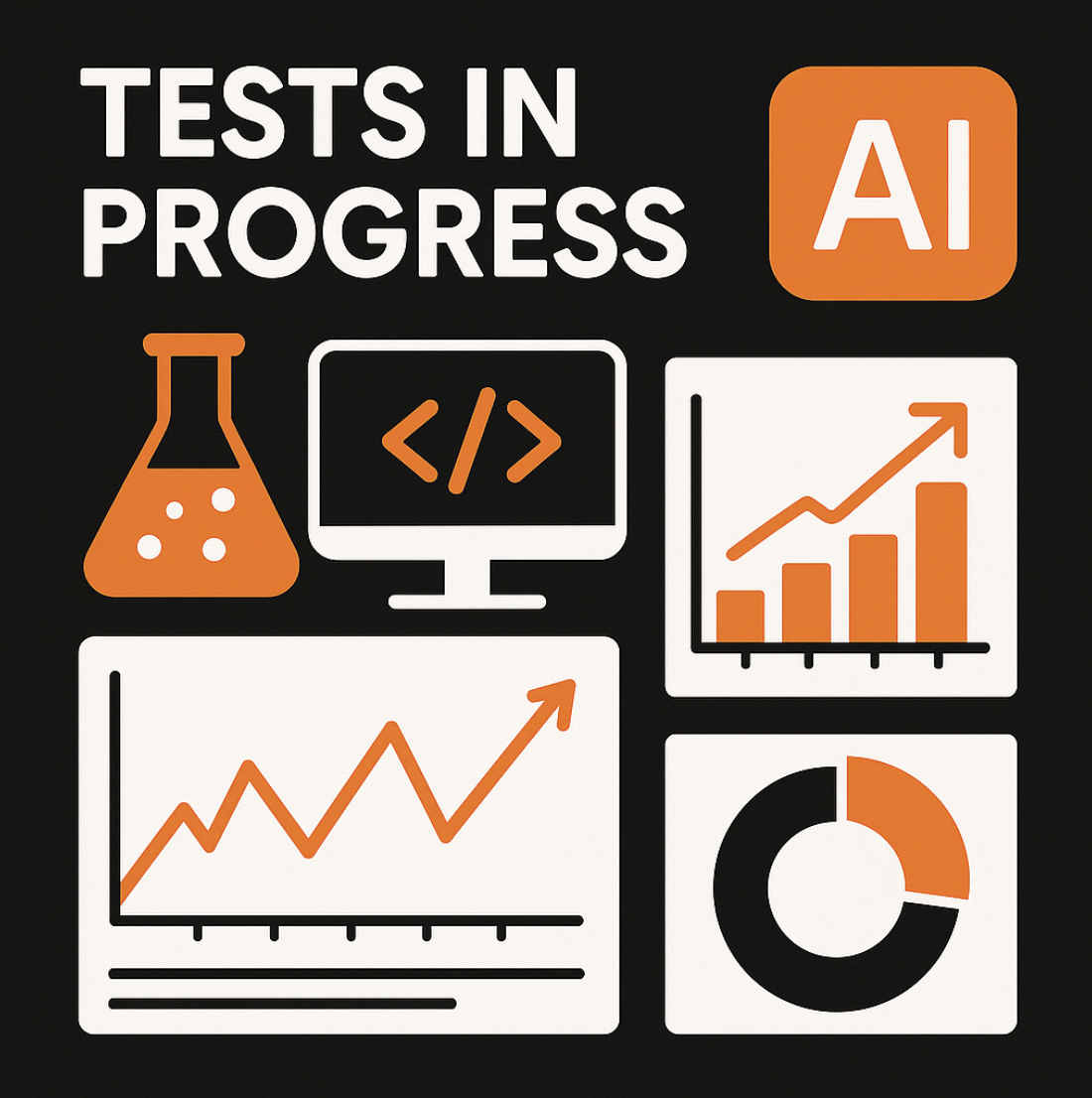
8. Pitfalls to Avoid
- Neglecting schema validation: Always run Rich Results tests; invalid markup means no AI visibility.
- Overlong proof blocks: Keep answers punchy – under 150 words.
- Keyword stuffing: AI models penalise repetitive language; focus on clarity over volume.
- One‑and‑done mentality: AEO is iterative – plan monthly audits and updates.
- Branded focus only: Balance branded and non‑branded prompts to expand top‑of‑funnel reach.
9. Looking Ahead: The Future of AEO
- Real‑time data feeds: Live APIs will power dynamic answer blocks.
- Personalised answers: AI will tailor responses based on user profile and history.
- Multimodal answers: Expect image, video and audio answers in AI referrals.
- Cross‑platform consistency: Align your brand across chatbots, voice assistants and SERPs.
10. Conclusion & Next Steps
AEO is not a trend – it’s an essential diversification of your search playbook. At Webprofits, we’re already in flight: tracking visibility with Profound, measuring share‑of‑voice across AI platforms, and iterating rapidly based on real data and manual audits. If you’re not doing the same, you’re ceding vital ground to competitors.
Here’s your quick-start checklist:
- Choose your audit approach (enterprise tools or manual SEMrush/Ahrefs checks + chatbot queries) to establish your baseline.
- Define and prioritise core prompts based on keyword research and audience intent.
- Build and tag proof blocks with schema and EEAT signals to capture AI’s attention.
- EEAT (Expertise, Experience, Authoritativeness & Trust): This emphasises content quality. EEAT signals – such as author credentials, real-world examples, brand reputation and transparent sourcing – help AI models and search engines evaluate and surface your content as credible and reliable.
- Deploy structured data and entity markup; validate and submit updates to Search Console.
- Measure AI visibility (Profound/Scrunch or manual tracking) and AI-referral clicks in GA4.
- Iterate every 4–6 weeks refine prompts, expand citation strategies, and enhance technical signals.
Now is the moment to make your brand visible wherever AI answers questions. Embrace AEO, secure your share of voice, and stay ahead of the curve because if you’re not leading this charge, someone else will.
Ready to get your brand AI ready? Contact the Webprofits team for a no-obligation AEO Foundations Discovery Call and see how we can help you become the answer of choice across AI platforms in 2025 and beyond.
AEO Key Terms & Glossary
Before we dive in, here are some foundational definitions:
- AEO (Answer Engine Optimisation): Crafting content so AI systems (chatbots, virtual assistants, AI-overviews) can directly surface your answers.
- Schema Markup: Special code you add to your pages (often JSON‑LD) that labels content elements (e.g., FAQ questions, product details) so machines understand them.
- Entity: A real-world thing (person, place, product, concept) you label with schema to help AI identify and connect information.
- Prompt: The question or instruction you think a user or AI model might ask or use to fetch an answer.
- Proof Block: A self-contained snippet (100–150 words) that directly answers a single prompt, tagged with schema and author details.
- Share of Voice (SOV): Your brand’s percentage of visibility across AI platforms for a given set of prompts.
- EEAT (Expertise, Experience, Authoritativeness & Trust): The four pillars Google emphasises for content quality. EEAT signals—such as author credentials, real-world examples, brand reputation and transparent sourcing—help AI models and search engines evaluate and surface your content as credible and reliable.


